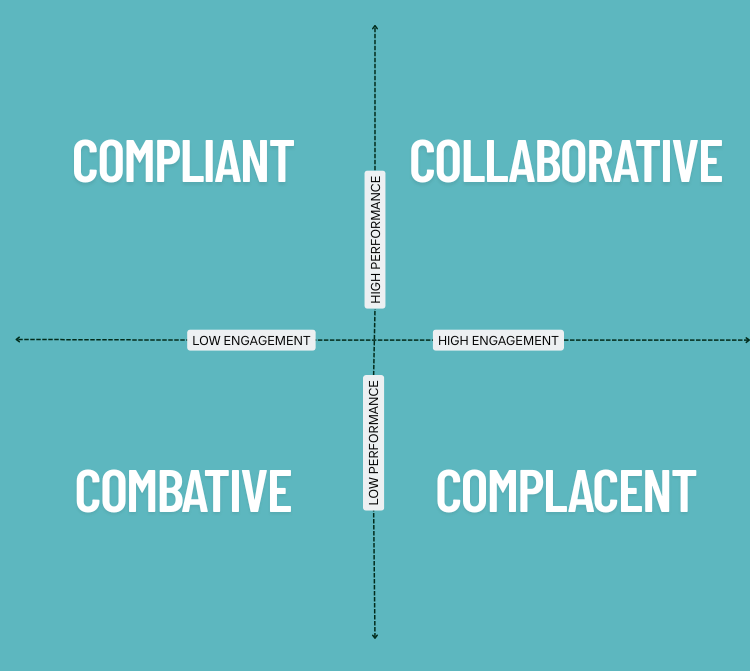Performance is king. Or so we’ve been told.
From cash flow forecasts to hiring decisions, business owners are constantly seeking ways to make their teams more productive, more efficient, more focused. But for culture strategist Emma Kirkwood from the Trusted Advisor Network, we’re approaching the challenge from the wrong end.
“You can’t get performance without engagement,” she says plainly. “It’s always engagement first.”
That one idea — shared during a recent presentation to a packed room of business owners — may be the most important shift many small and mid-sized enterprises need to hear. In a world that prizes results, Kirkwood is asking leaders to pause and consider the emotional infrastructure of their workplaces.
And if they’re willing to listen, she believes they’ll unlock more than better performance — they’ll reclaim the energy, income, and inspiration they lost somewhere along the way.
A Quiet Crisis in Plain Sight
Kirkwood has spent over 25 years helping businesses large and small navigate the murky waters of people management. From recruitment agencies to workplace investigations, she’s seen what happens when culture breaks down — and more importantly, what happens when it’s built with intent.
But in recent years, she’s noticed a disturbing trend.
“Sixty percent of small business owners in Australia earn less than $50,000 a year,” she explains. “That’s less than many of their employees. And yet, they’re taking all the risk, working longer hours, carrying the weight of leadership alone.”
The issue, Kirkwood believes, isn’t a lack of tools. It’s not a marketing misfire or a failure of strategy. It’s a fundamental gap in how small businesses understand and activate culture.
“Most owners are doing three or four jobs in their business, and they’re reluctant to grow because managing people feels too hard. But the problem isn’t the people — it’s how we engage them.”
Diagnosing the Culture Code
To help teams and leaders better understand their dynamics, Kirkwood developed what she calls the Culture Performance Matrix — a deceptively simple grid that reveals everything from hidden tension to untapped potential.

The matrix maps two axes: performance and engagement. When overlaid, they create four cultural profiles:
-
Complacent: High engagement, low performance. A friendly, low-output environment.
-
Combative: Low engagement, low performance. Often marked by resistance or silence.
-
Compliant: High performance, low engagement. Systems are followed, but morale is low.
-
Collaborative: High engagement, high performance. Where teamwork and innovation thrive.
It’s that last quadrant — collaboration — that Kirkwood sees as the holy grail of small business culture. And the path to getting there, she argues, starts not with systems or incentives, but with trust.
“In collaborative teams, people step up, not just show up,” she says. “They bring solutions, they challenge ideas, they co-create. And the only way to get there is through meaningful engagement.”
Where Systems Meet People
Businesses are often tempted to systemize their way to success. But Kirkwood warns that without a foundation of engagement, systems become lifeless.
“Documentation doesn’t create culture. People do,” she says. Tools like Way We Do are brilliant for making processes visible and actionable. But those tools only work when people are connected to the ‘why’ behind them.
In compliant cultures, where processes are followed without question, innovation dies quietly. But in collaborative cultures, systems become living documents — evolving with the team, challenged by insight, and refined through shared purpose.
Creating a Culture System
Culture, says Emma Kirkwood, isn’t something you fix with a motivational poster or a Friday pizza lunch. It’s a system — just like finance, sales, or operations. And like any system, it needs structure, rhythm, and intention.
“Business owners often tell me they want a better culture,” she says. “But when I ask them what they’re doing to build one, they usually point to a vague sense of team spirit or a social outing last quarter.”
That’s not enough.
What’s needed, she explains, is a Culture System — a repeatable set of activities embedded into the business calendar that fosters connection, alignment, and performance over time.
This is where platforms like Way We Do come in. By documenting and activating culture-building practices as repeatable processes, businesses create a reliable cadence for engagement. These aren’t one-off conversations — they’re built-in, visible, and accountable.
A basic Culture System might include:
-
Weekly one-on-one meetings with team members to check in on progress and well-being.
-
Monthly team meetings to align on goals, celebrate wins, and surface roadblocks.
-
Quarterly performance conversations to reflect, reset expectations, and invest in growth.
-
Regular pulse surveys or feedback loops to understand sentiment and engagement levels.
“Culture happens in the micro-moments,” Kirkwood says. “If you systemize those moments, you create the conditions for collaboration to thrive.”
In Way We Do, these elements can be documented as Activated Checklists, assigned to roles, and tracked for consistency. The goal is to ensure these conversations don’t slip between the cracks, especially when the business gets busy.
“Culture is too important to leave to chance,” says Kirkwood. “By systemizing engagement, you’re not only creating a better place to work — you’re creating a better engine for performance.”
The Bigger Picture
Kirkwood’s message lands at a critical time. With economic uncertainty, rising wage pressures, and the ever-present distractions of digital life, small business owners are stretched thin. But perhaps the greatest challenge isn’t what they’re doing — it’s what they’re avoiding.
“We avoid the people stuff,” she says. “We’d rather chase more clients than sit down and ask our team what’s blocking them. But the irony is, the team is the answer.”
For Kirkwood, redefining leadership means choosing to lead with connection first, and metrics second.
“You don’t have to be an HR expert,” she says. “You just have to care enough to start. And once you start, systems and structures will support you. But they’ll never replace you.”
As businesses prepare for the years ahead — some to scale, some just to survive — Kirkwood’s advice is both sobering and hopeful.
“If we want performance, we need to treat the water, not just the fish,” she says. “Fix the environment. Prioritize engagement. Then watch what becomes possible.”





